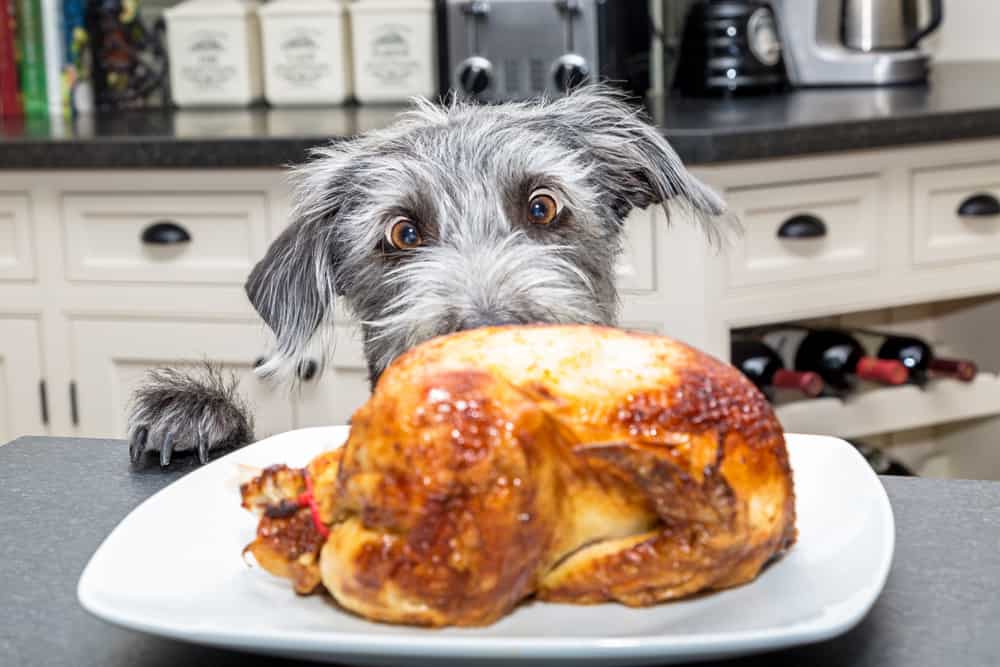Coming home to find your furry friend not quite acting themselves can be a worrying experience. Touching their coat, they might feel warmer than usual, making you wonder if they have a fever. The knee-jerk reaction is to reach for a thermometer. But let’s face it, not every household has one at the ready. Moreover, even if you did, many dogs aren't exactly thrilled about the somewhat invasive way thermometers are used.
So, how can you detect if your dog has a fever without such a tool? And, considering that we all want to have fun with your dog even on their off days, what's the best way to ensure they're feeling okay?

Warm Nose: A Reliable Indicator or Just a Myth?
The age-old belief is that a dog's health can be determined by the state of their nose. A cold and wet one signifies health, whereas a dry and warm one suggests illness or fever. But it's important to approach this with a pinch of skepticism. Many factors can cause a dog's nose to be warm, such as after a nap or a good sunbathing session. So, while it’s a hint, it's not a definitive indicator.
Other Physical Symptoms
Those who’ve spent time around rescue dogs understand that dogs can be incredibly resilient. However, when unwell, there are undeniable physical signs hinting at a potential fever:
- Ears Feeling Warm: Beyond the nose, the inside of a dog's ears can also hint at their temperature. If they feel warmer than usual, it's worth noting.
- Lethargy: Fever can sap a dog's energy, making them seem less interested in activities they usually love.
- Shivering: Just as humans might get chills with a fever, dogs can exhibit shivering when they’re unwell.
Behavioral Signs
A dog's behavior is a window into their well-being. For instance, have you ever seen a dog oddly shake their toys outside of playtime? Or maybe, they don’t seem to recognize faces they usually would. These unusual behaviors can signal that something is amiss, possibly linked to a fever.
Changes in Appetite and Habits
A sudden change in a dog's eating pattern can be concerning. They might turn their nose up at their favorite snack or skip meals altogether. Concurrently, if they're drinking more water and urinating more frequently, it could be a sign of discomfort. On a slightly tangential note, remember to mind your dog restaurant etiquette if you ever decide to dine out with your canine friend.
When It’s Time for Professional Help
If you observe multiple of the above signs, or if they persist, consult a veterinarian. While your observations might point to a fever, several conditions could manifest in similar ways. It’s especially vital to act fast if any behavior suggests severe conditions, even as grim as indications of impending dog death. Always err on the side of caution for the sake of your pet's well-being.
Understanding Your Dog Better
As pet owners, our connection with our dogs goes beyond the surface. We celebrate their joys, feel their sorrows, and instinctively know when something's amiss. This deep bond means we often sense issues before they become apparent. While the aforementioned signs can indicate a fever, sometimes it's just that gut feeling that tells us our pet isn't feeling their best.
Daily Observations: A Key Tool
One of the best ways to quickly notice changes in your dog's health is to make daily observations a habit. Watch how they interact with their surroundings. Are they eager to chase after their ball like they always do? Or do they prefer lying down in a corner? Sometimes, it’s these tiny deviations from their routine that signal the onset of a problem.
Don’t Forget Playtime!
The importance of regular play and interaction can't be stressed enough. It's during these fun with your dog moments that many subtle behavioral changes come to light. If your dog suddenly loses interest in their favorite toy or doesn't want to engage in a game they usually love, it could be a sign they’re not feeling well.
Be Aware, But Don’t Panic
It's essential to remember that, just like humans, dogs have off days too. They might just be tired, have eaten something that didn't sit well, or are simply in a low mood. So, while it’s crucial to be vigilant, it’s equally important not to panic at every small change.
However, let's say you’re at a public setting, and your dog suddenly acts out. Always remember the basics of dog restaurant etiquette. Their behavior might not always be related to health; sometimes, it’s just the environment or unfamiliar faces. Speaking of which, dogs have a fascinating ability to recognize faces. If they’re not reacting to someone they usually greet with enthusiasm, it might be a sign of discomfort or unease.
Advocate For Their Health
In situations where you believe your pet’s health might be at risk, it’s better to be proactive. While it might turn out to be a minor issue, it's always better to have the peace of mind that comes from professional advice. If you’ve rescued your pet, remember that rescue dogs sometimes carry trauma or health issues from their past. Being sensitive to their needs and history is crucial.
The Emotional Connection and Its Role in Detection
The bond between a dog and its owner is profound and intricate. It's a connection that's built over time, with each shared moment, every game of fetch, and every quiet evening on the couch. This emotional bond often transcends the physical, making you deeply attuned to your dog’s feelings and health.
Observing the Little Things
Your dog's favorite activities can be a telling sign of their health. For example, if your dog always loves to shake their toys during play but suddenly seems disinterested, it might indicate more than just a passing mood. Similarly, if your dog is one that tends to recognize faces eagerly, like eagerly greeting a family friend, and they suddenly seem aloof or distracted, it could be a sign of discomfort.
Making Adjustments for Their Comfort
As much as we want to ensure our dogs are healthy, we also need to ensure they are comfortable, especially when they are not feeling their best. If they seem lethargic or less responsive, maybe it’s a day for a quiet cuddle rather than an active play session. Remember, it’s not just about looking for signs of illness but also about adjusting our behavior and expectations to suit their current state.

Remembering Past Experiences
For those who've adopted rescue dogs, understanding their past can be crucial. Traumas or past experiences can sometimes manifest as behavioral changes, which might be mistaken for health issues. Recognizing these triggers and helping them through the process is as crucial as addressing physical health concerns.
A Global Community of Support
In today's digital age, numerous forums and communities provide support and advice to dog owners worldwide. From discussions on dog restaurant etiquette to deeper health-related queries, you can often find insights and shared experiences from other dog lovers. While it's no substitute for professional advice, it can offer comfort and sometimes point you in the right direction.
The Lifelong Commitment to Our Furry Friends
Choosing to share your life with a dog isn't just about the playful days and cozy nights; it's about being there for them in sickness and health. Their lifespans might be shorter than ours, but in their eyes, you're their whole world for that brief period.
Building a Knowledge Base
One of the best ways to be prepared for any hiccups in your dog's health is to continually educate yourself. Whether it's picking up books on dog care, attending workshops, or regularly consulting with your vet, knowledge is power. This proactive approach ensures you're not caught off-guard and can make informed decisions regarding their well-being.
Regular Health Checkups
Even if your dog seems perfectly healthy, regular vet check-ups are essential. These visits can often detect issues before they become evident, ensuring early intervention and, often, better outcomes. Plus, routine visits can help familiarize your dog with the vet, reducing stress during more urgent visits.
Engaging in Dog-Centric Activities
Another way to ensure your dog's well-being is to engage them in activities tailored for their enjoyment and health. Joining a dog playgroup, attending dog-friendly events, or even visiting a specialized dog restaurant can be both a fun outing and a chance to observe them in different environments. These outings can also be an opportunity to observe dog restaurant etiquette, reinforcing positive behaviors and ensuring pleasant experiences for all involved.
Embracing Technology for Assistance
Today, numerous apps and gadgets can help monitor your dog's health and activity levels. From smart collars that track their daily activity and vitals to apps that remind you of vaccination schedules, technology can be a valuable ally.

The Emotional Rollercoaster
It's inevitable that, at some point, our dogs will face health challenges. Whether it's a simple fever or something more severe, these times can be emotionally taxing. It's essential to have a support system in place. This could be friends who've gone through similar experiences, online communities, or local support groups. Talking to others can provide comfort, perspective, and sometimes, invaluable advice.
The Lifelong Commitment to Our Furry Friends
Choosing to share your life with a dog isn't just about the playful days and cozy nights; it's about being there for them in sickness and health. Their lifespans might be shorter than ours, but in their eyes, you're their whole world for that brief period.
Building a Knowledge Base with Fi Dog Collars
One of the best ways to be prepared for any hiccups in your dog's health is to continually educate yourself. Alongside books and workshops, innovative tools like the Fi dog collars can be instrumental. These smart collars are designed to provide insights into your dog's activity levels, sleep patterns, and overall well-being, making them a treasure trove of valuable data about your pet.
An Ounce of Prevention, Supported by Fi
Even if your dog seems perfectly healthy, regular vet check-ups are essential. With the data collected from Fi dog collars, you can provide your vet with accurate information on any sudden changes in activity or restfulness. It’s like giving your vet a detailed diary of your dog’s week, which can aid in more precise diagnostics.
Engaging in Dog-Centric Activities Monitored by Fi
Joining a dog playgroup, attending dog-friendly events, or even visiting a specialized dog restaurant becomes more insightful when you have data from the Fi collar at your fingertips. You can track how much exercise they're getting during these outings and even monitor their rest afterward. Plus, when discussing dog restaurant etiquette, you can ensure they're not getting overly exhausted by the excitement.
Embracing Technology for Assistance:
In today’s age, numerous gadgets promise to aid in pet care, but the Fi dog collar stands out. Not only does it monitor activity, but it also offers GPS tracking, ensuring you always know where your furry friend is. Lost dog scenarios can be significantly reduced, and the peace of mind it offers is priceless.
The Emotional Rollercoaster
Health challenges with pets are emotionally draining. Having tools like the Fi dog collar can provide some comfort. Being able to show tangible data about their activity drop or restless nights can help in consultations with vets or when discussing concerns with fellow dog parents.
Conclusion
In our journey as dog owners, understanding our pets' well-being is crucial. From observing behavioral cues to detect a fever, to harnessing innovative tools like the Fi dog collar for insights and safety, we have numerous aids at our disposal. Regular health check-ups, coupled with data-driven insights from smart gadgets, ensure timely interventions. Participating in dog-centric activities and building a knowledge base further equips us to offer the best care. Through a blend of observation, technology, and emotional connection, we can navigate the ups and downs of pet ownership, ensuring our furry friends live their happiest, healthiest lives by our side.






